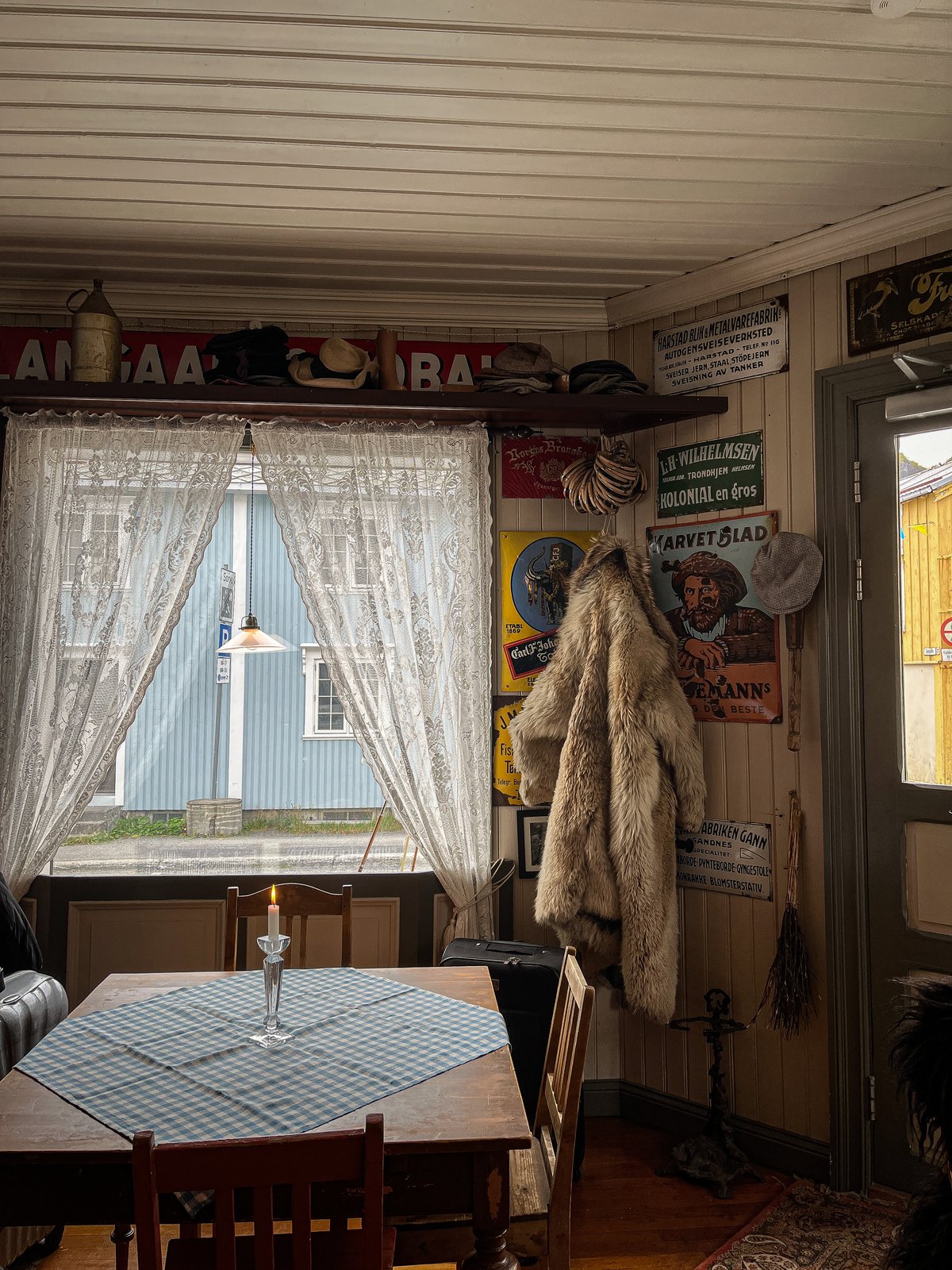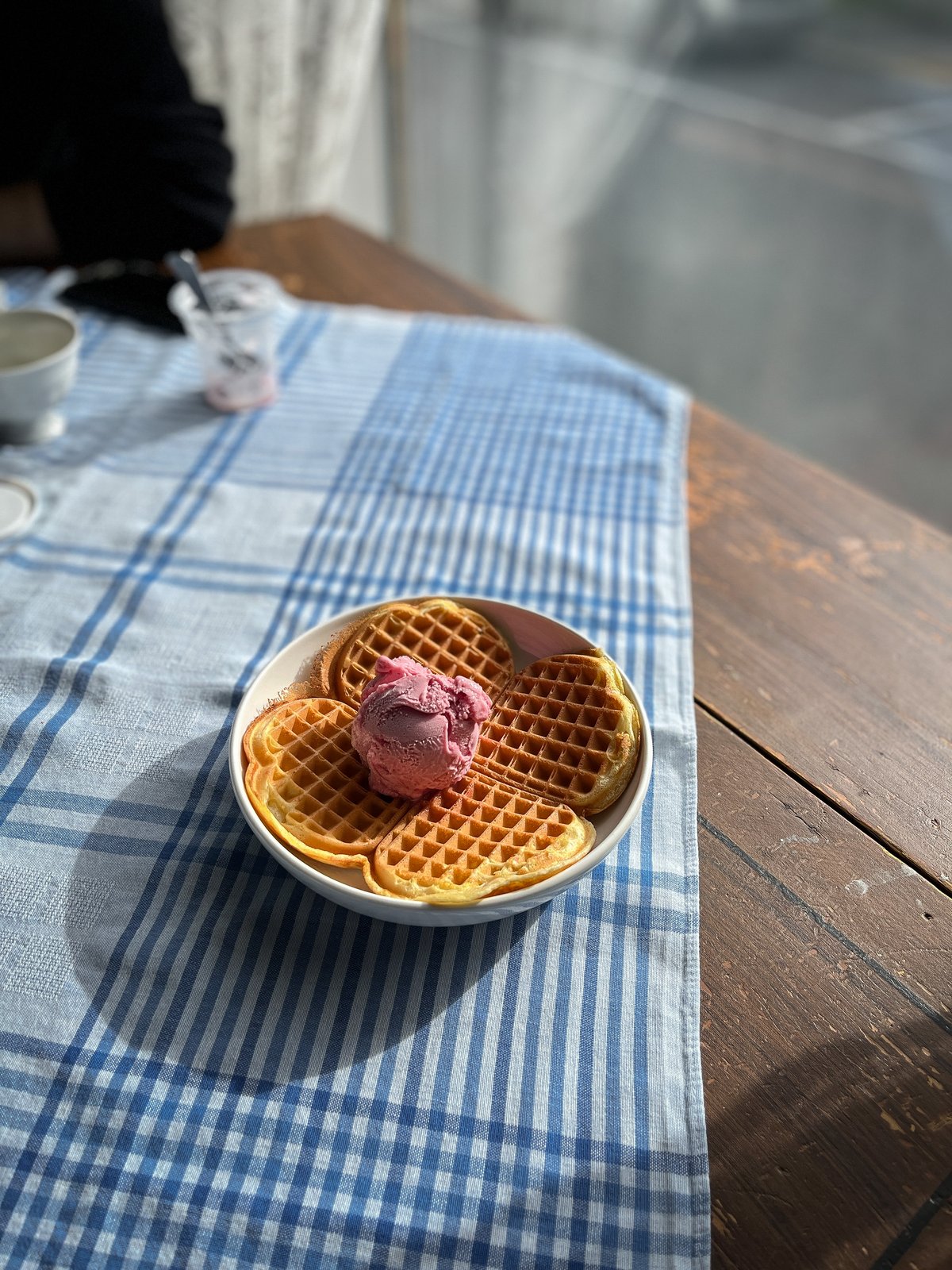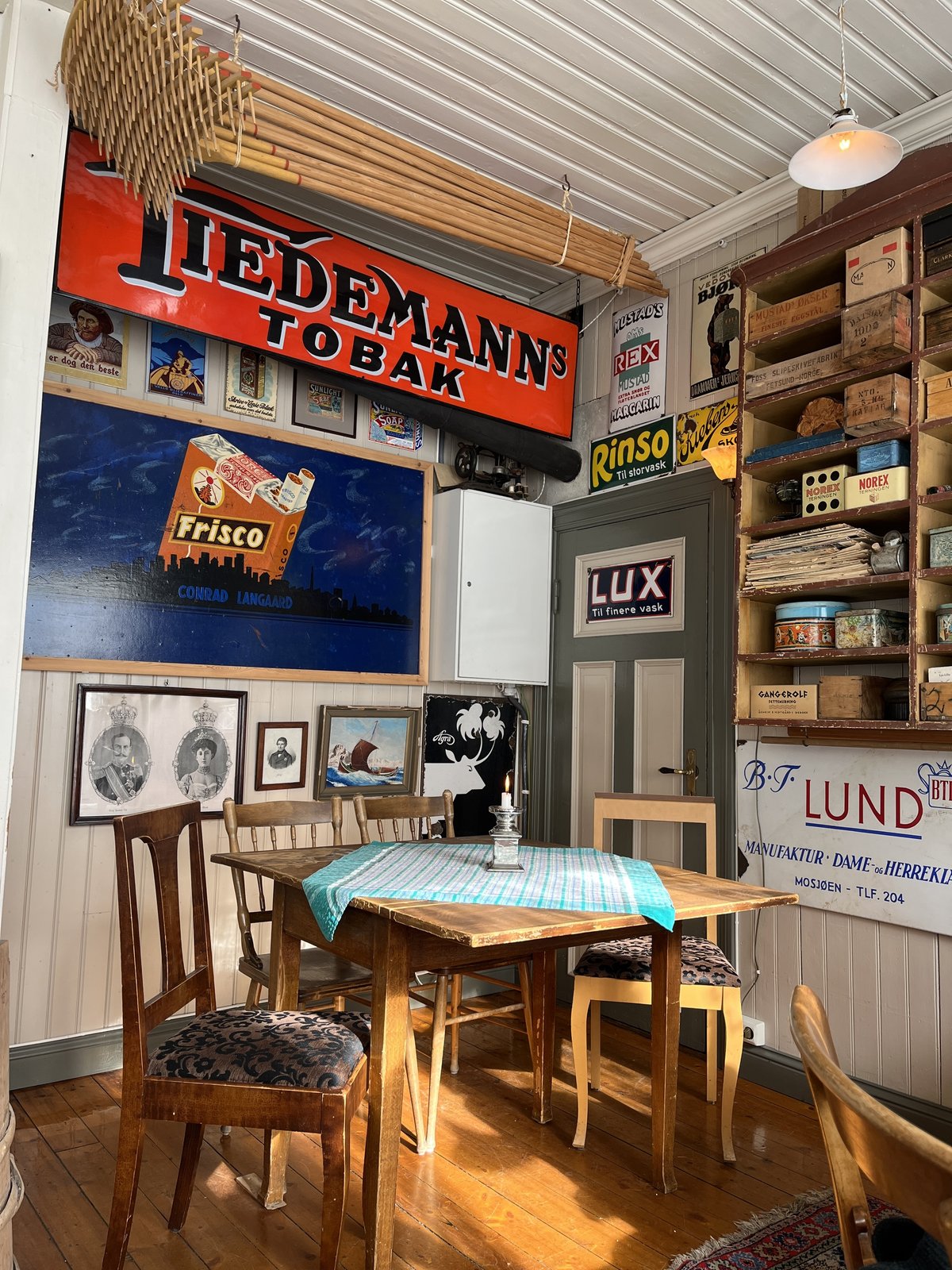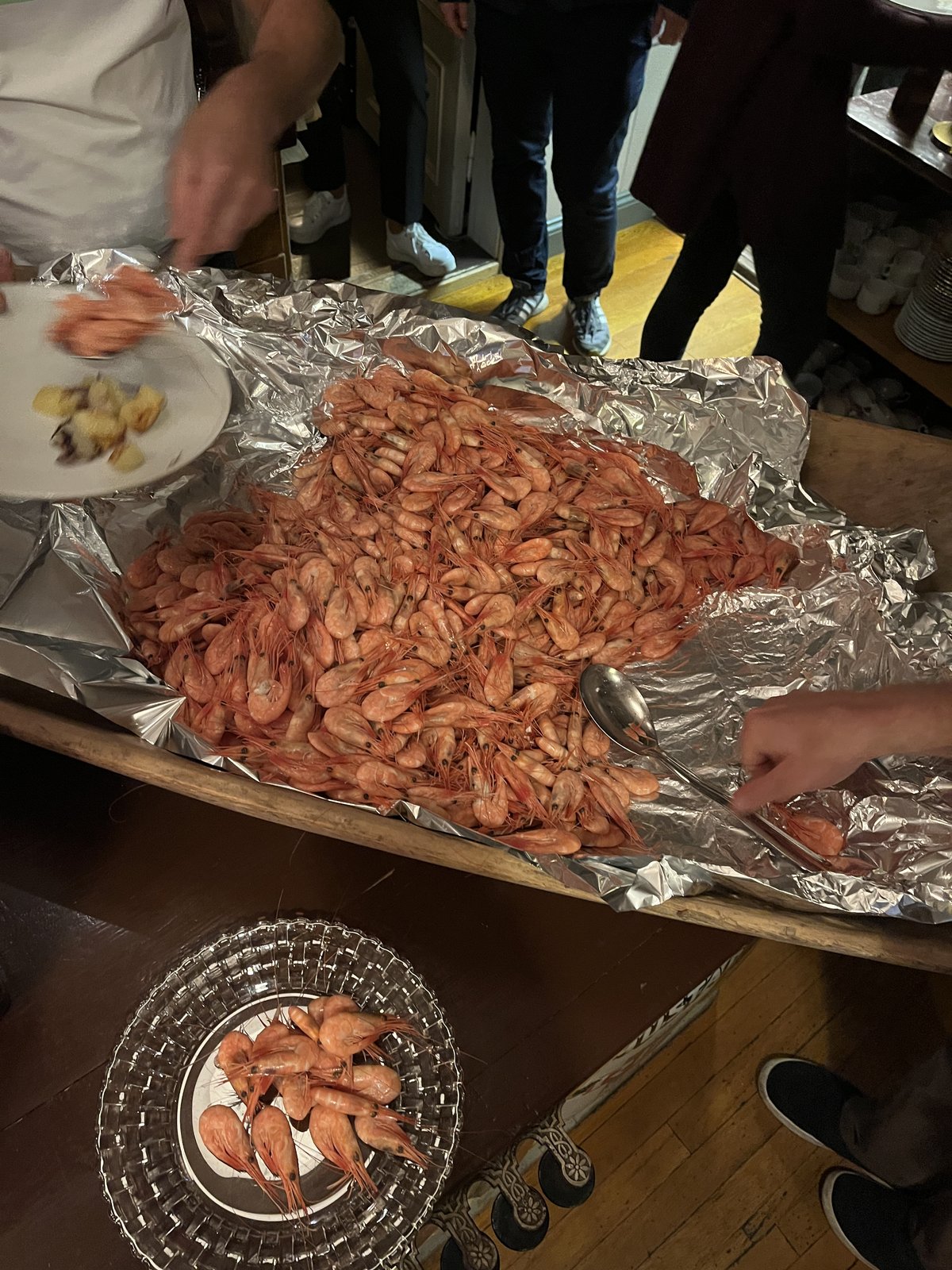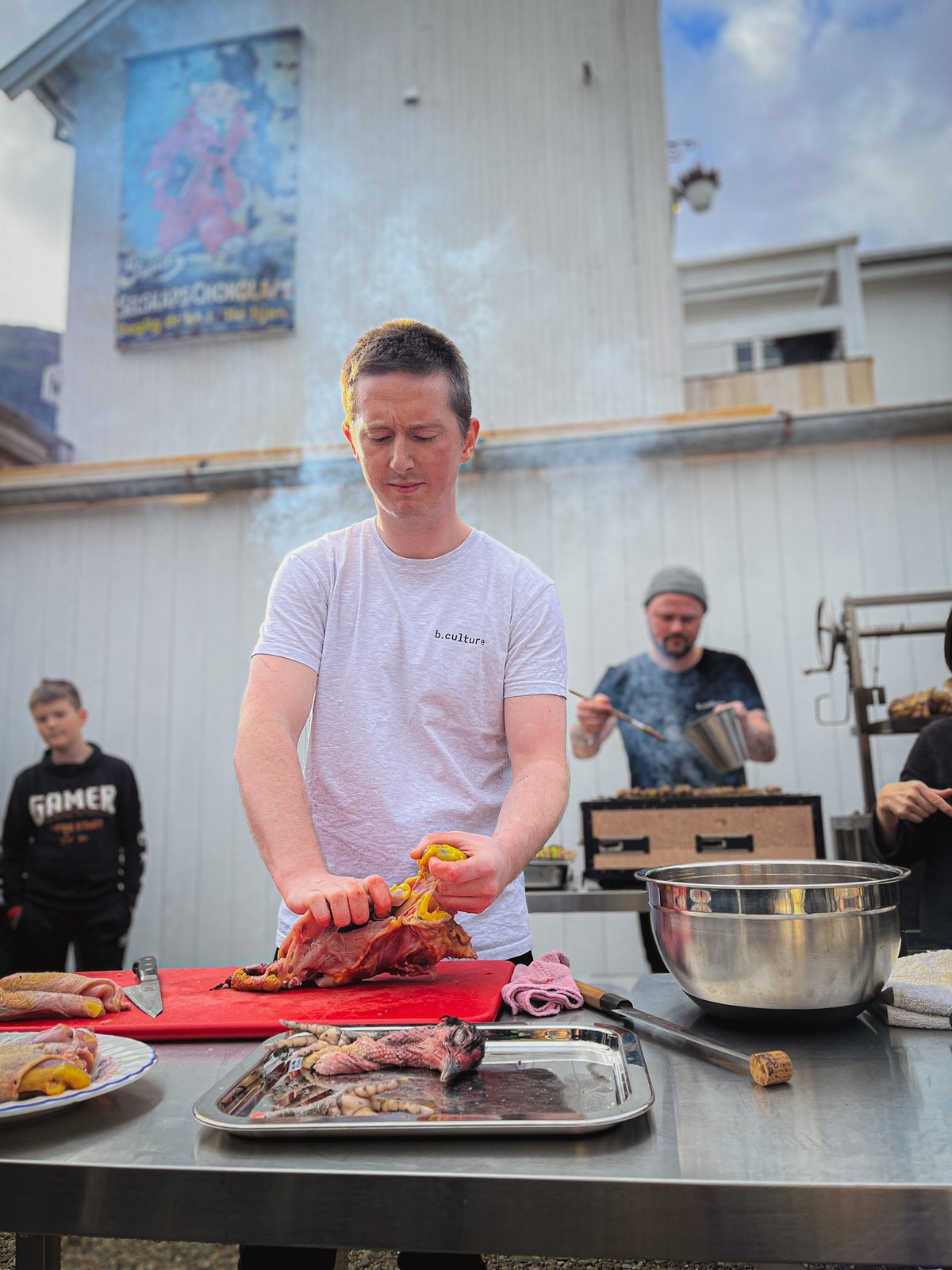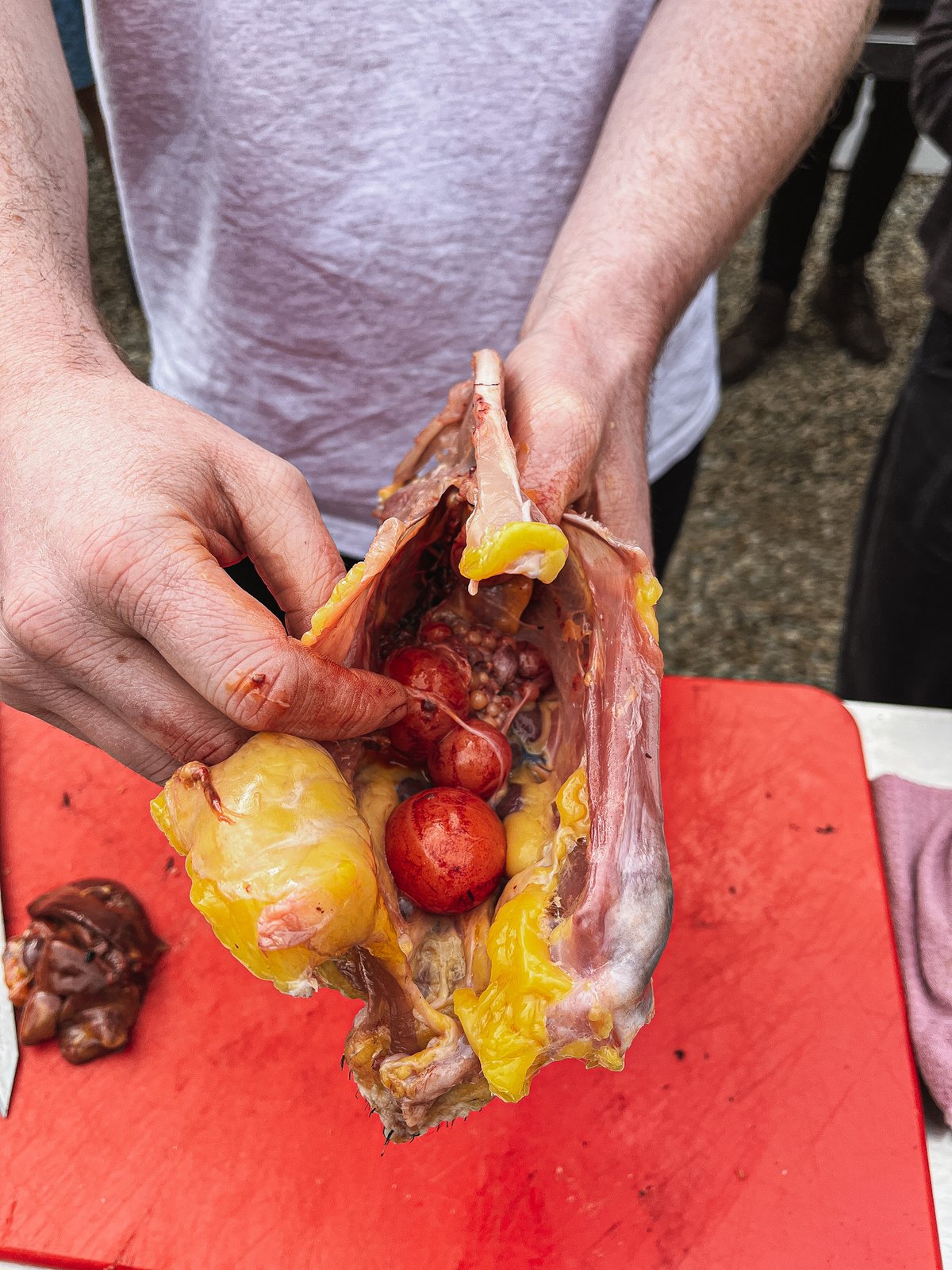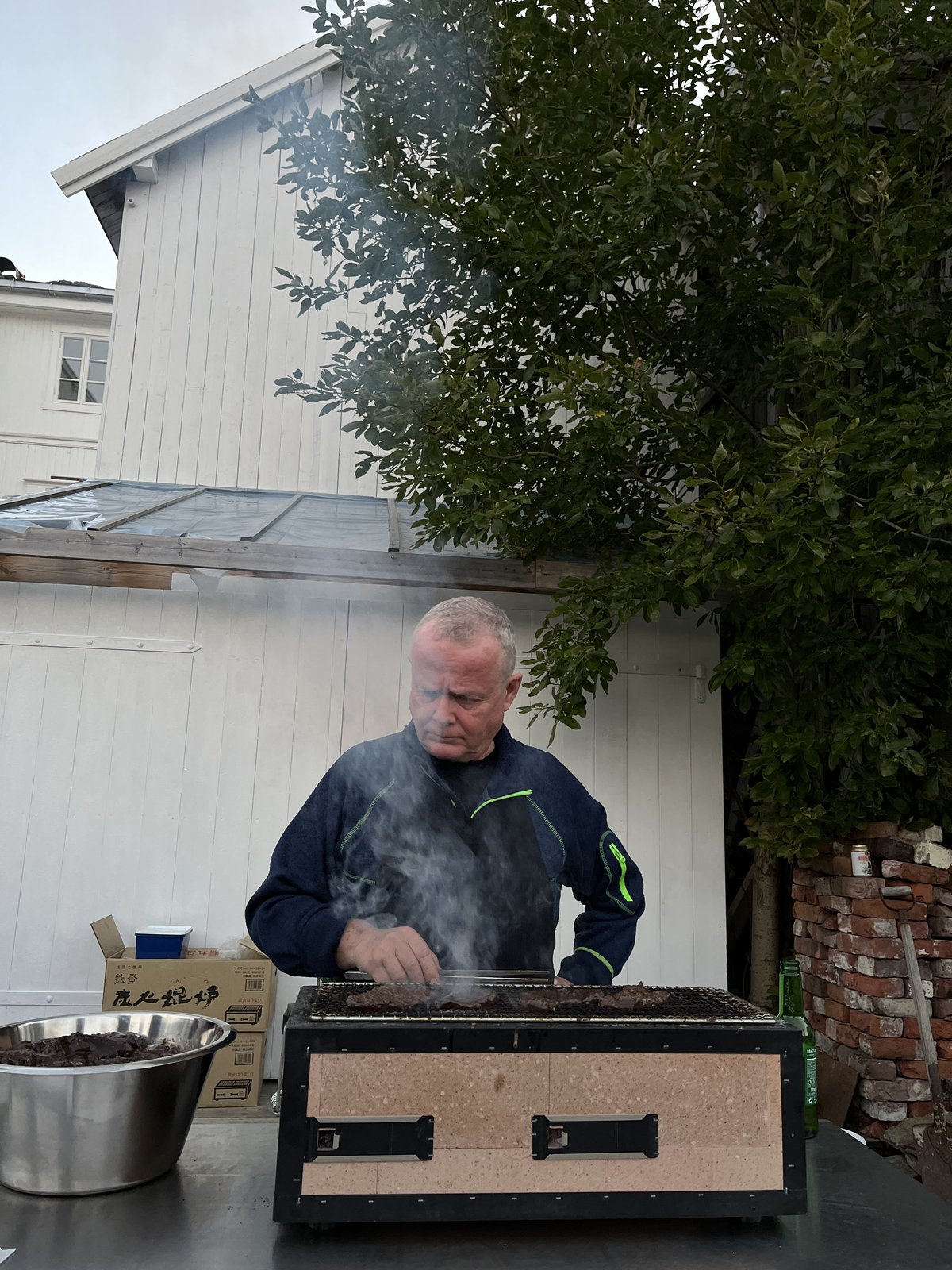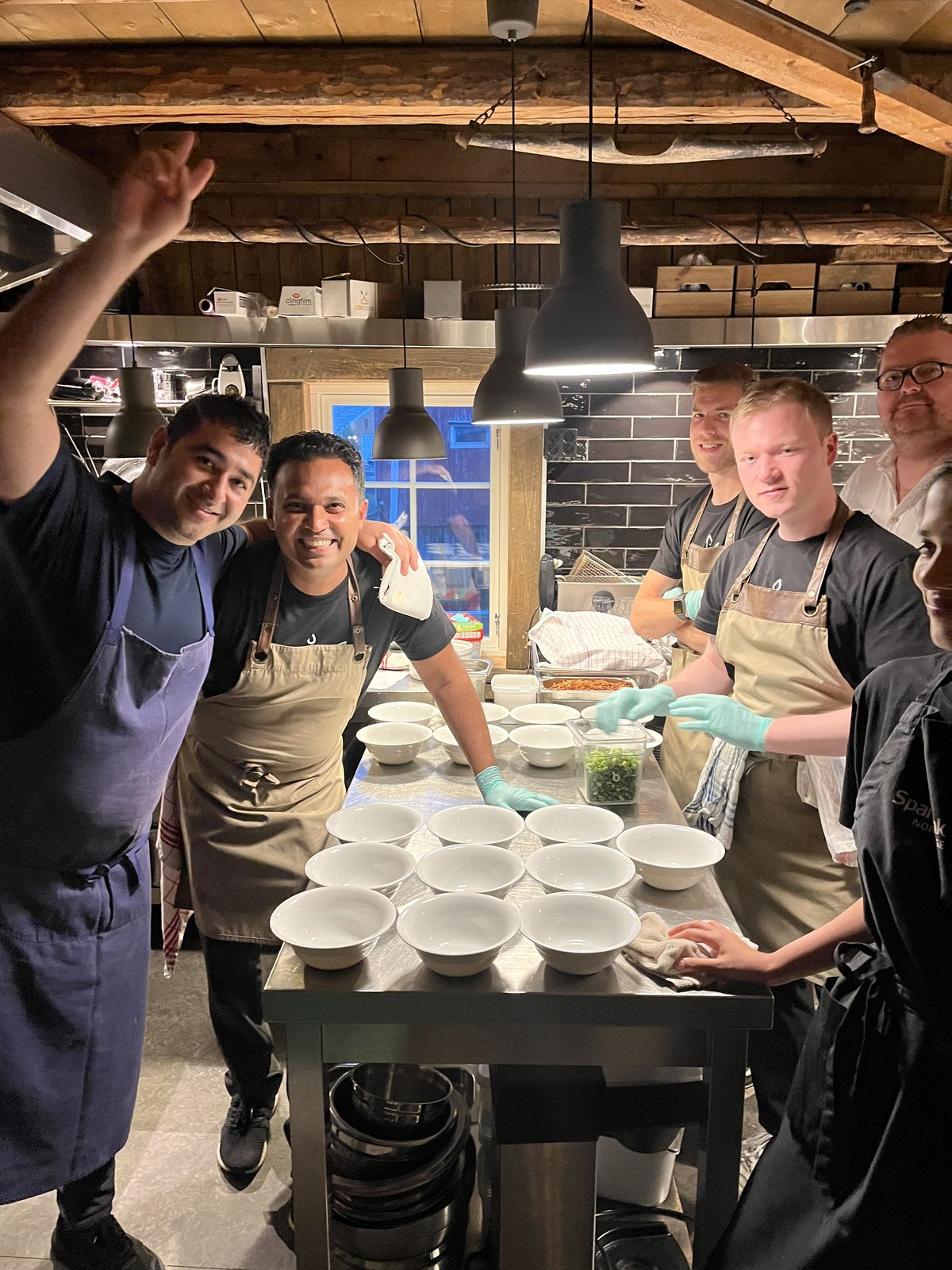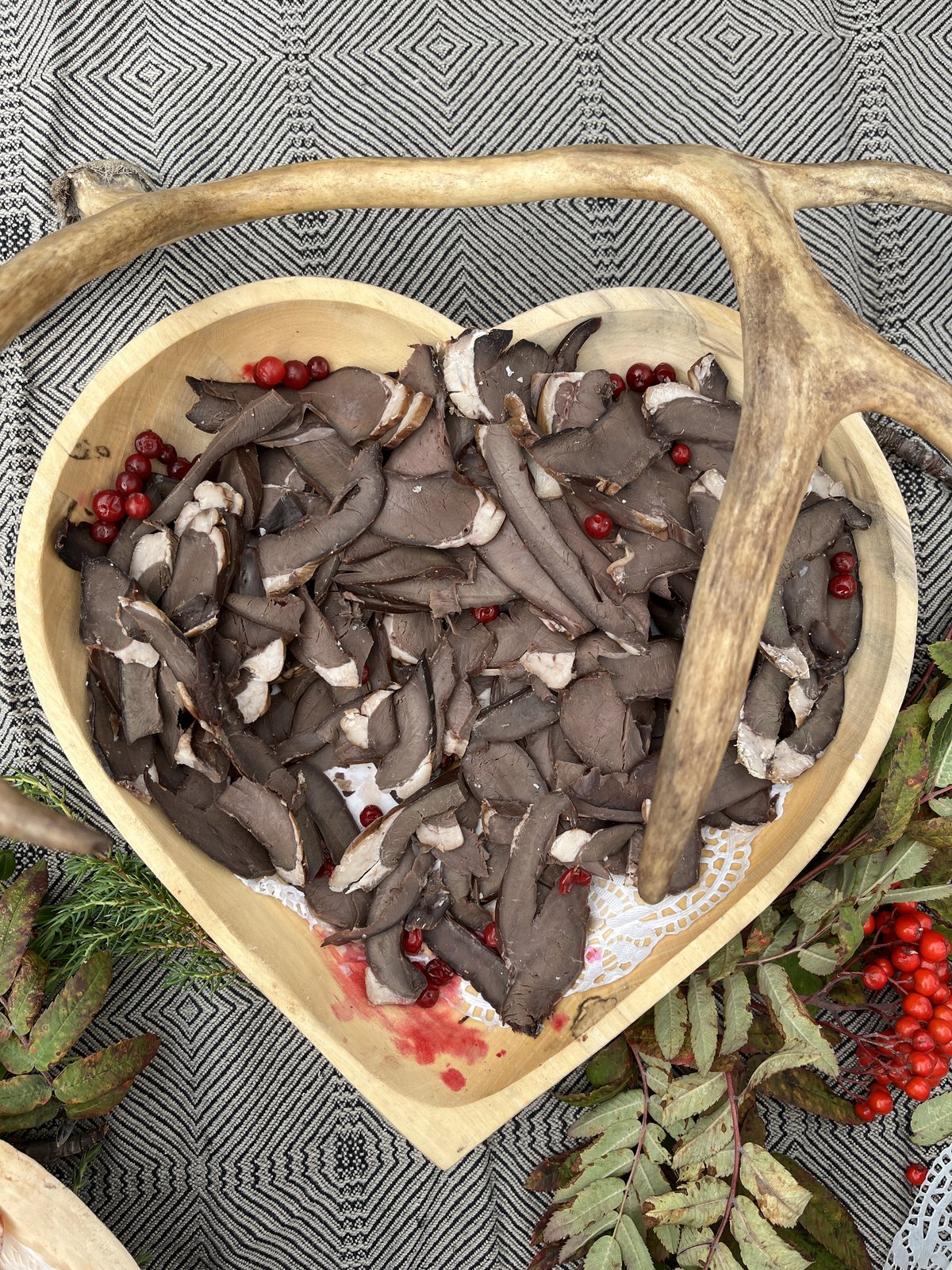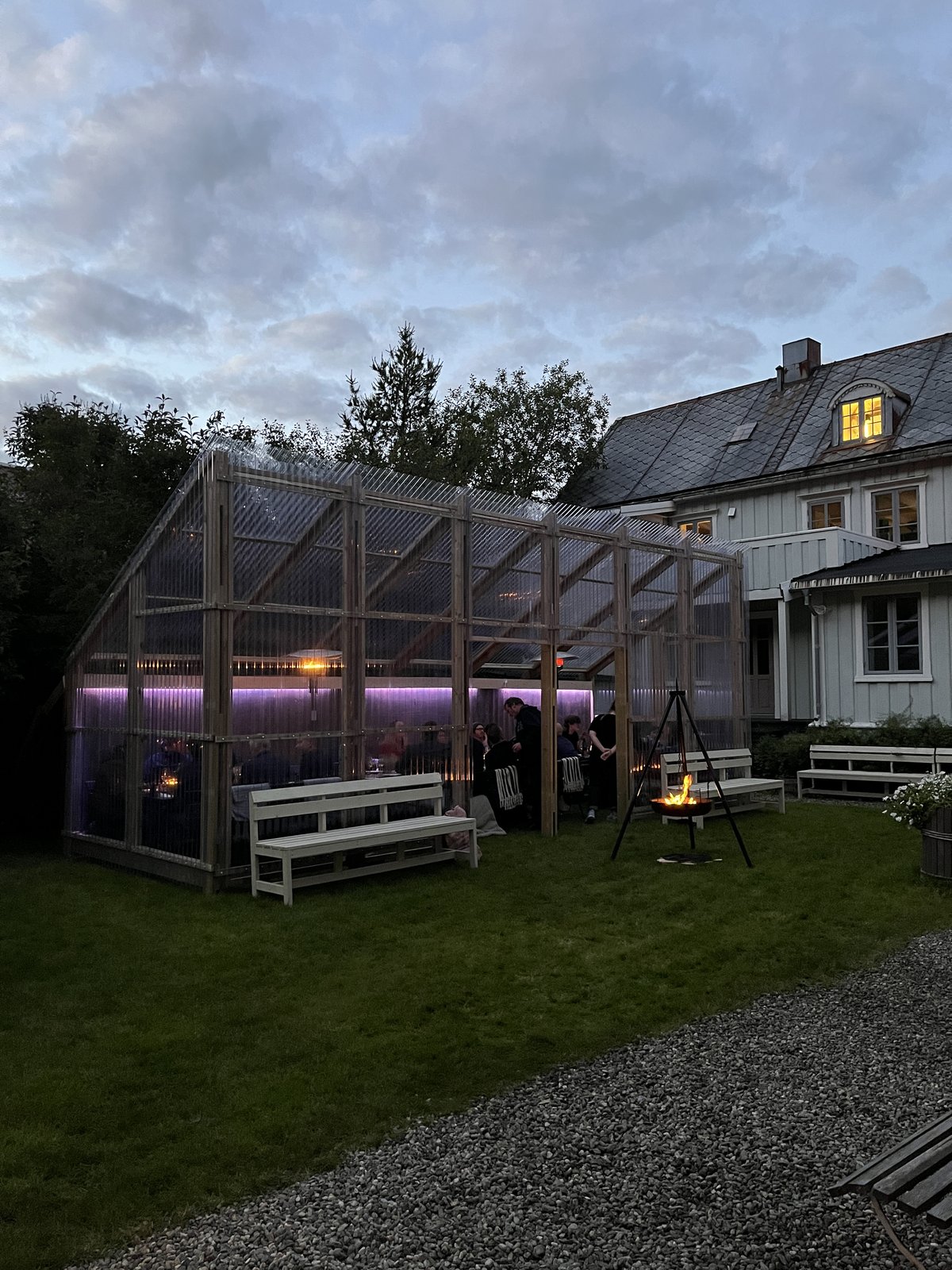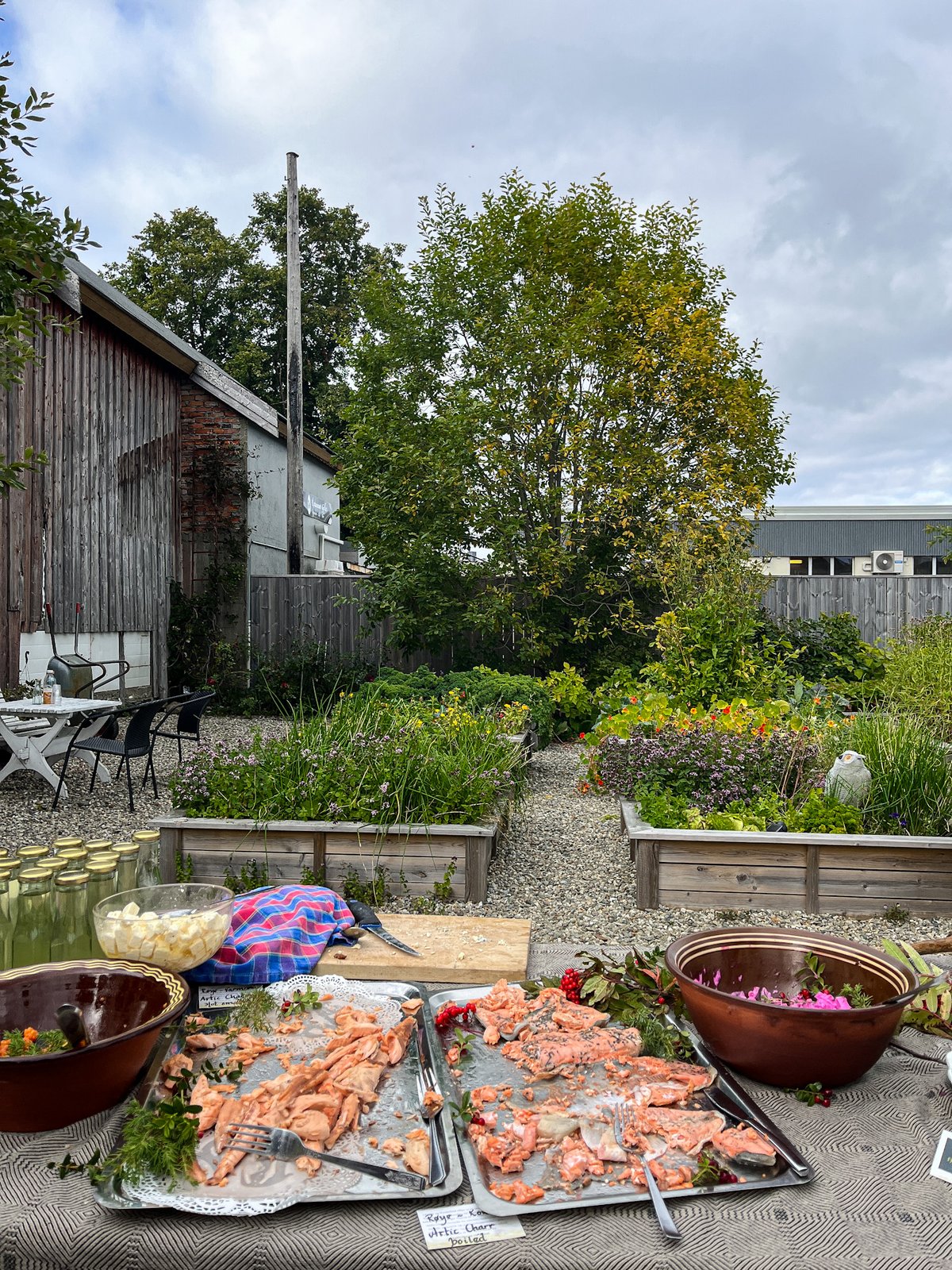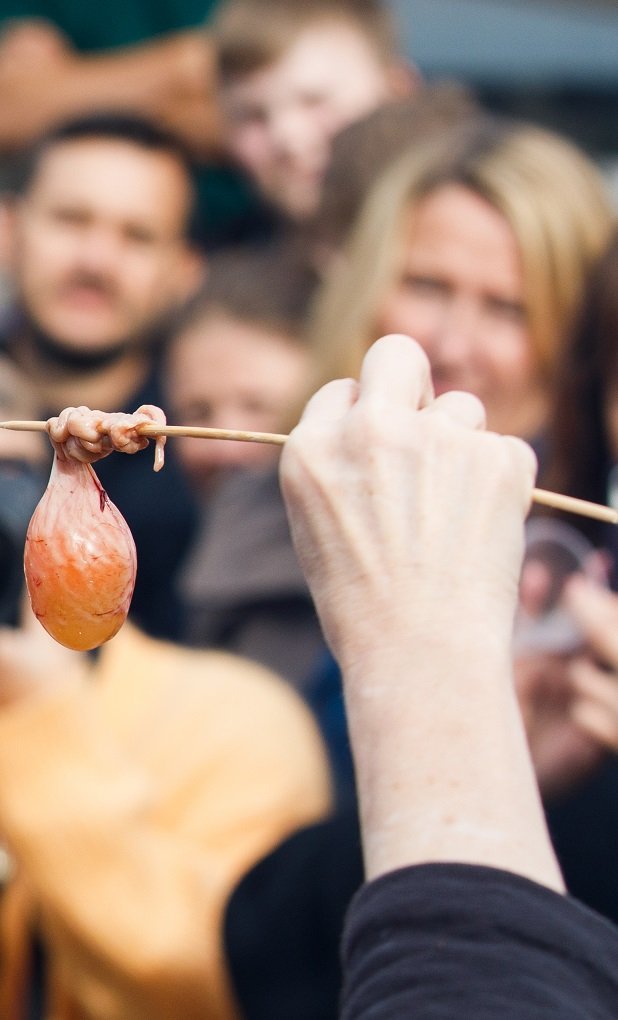Mosjøen is a small town on the Helgeland coast in Nordland county, Northern Norway, about halfway between Trondheim and Bodo. Bodo was recently named the 2023 European Capital of Culture, the first time the honour has been given to a city north of the Arctic Circle. Mosjøen is the oldest town in the region of Helgeland, and those historic roots certainly add an air of palpable antiquity to 19th-century Sjøgata Street. On a sunny day in early September, you can see the afternoon sun reflecting on the Vefsna river, flowing between the red and yellow timber houses. It follows Sjøgata Street, across the town, to then join the Skjerva river which flows into the Vefsnfjord, a 51-kilometer-long fjord that connects Mosjøen with the Atlantic Ocean.
This tiny town is packed with wonders. Upon arrival, the first person to welcome us is Espen from the ArktiskMat team, who immediately assures us that we have now arrived in Norway, the real one!
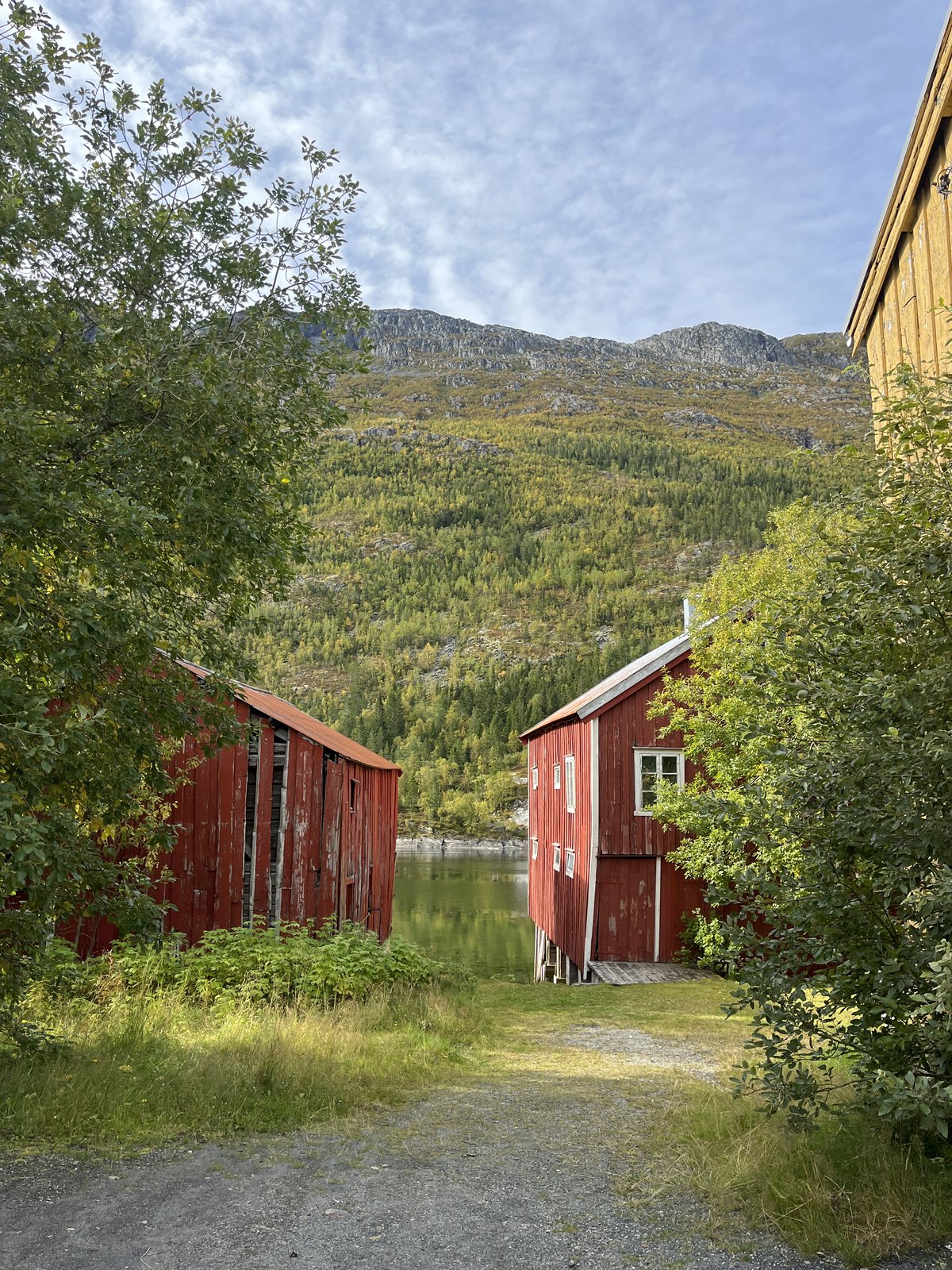
Coffee shop Umami is a great first place to visit, to sample the best local roasts all in one place. At almost any given time, while you make your way along Sjøgata Street, you find yourself captivated by the silence. Your pace slows down, it feels reminiscent of the closing scenes of a Lars von Trier movie, while ironically the historic Sjøgata buildings appear almost staged, as if they were props.
This September the annual gathering of chefs, journalists, and food experts has marked its 10th anniversary.
«It started 10 years ago with the idea to turn a traditional food-festival into something more special, focusing more on education, networking and recruitment to the industry, rather than just handing out free samples of food to the locals that were passing by. I ended up discussing this idea with Roddie, knowing he was well connected. Roderick was onboard right away, so then we contacted Marianne, who had the beautiful location of Vikgården. Espen works in a bank, and he joined us a couple of years later. He’s extremely enthusiastic about food and has been our tech guy and “fixer” ever since. After 10 years we now have a great team of people working with the event, and engaging with students regarding a variety of subjects.» - Notes Per Theodore Tørrissen, the project manager of the ArktiskMat.
Indeed, this modest team of just a few enthusiasts, which has been providing a food event like no other for 10 years, started with the idea to go far further than the usual food festival. Roderick Sloan has been on board with Tørrissen from the beginning and contributed to the event’s international character using his vast connections within the industry. Sloan is a man bestowed with a strong and impactful personality. He’s renowned for diving into the Norwegian Sea to harvest sea urchins that have gained legendary status over the years when served at restaurants such as Faviken, Noma, and Maemo. He is also the voice behind the most persuasive pitch that leads the flow of the events. When Sloan speaks, you simply can’t fail to listen.
Tørrissen, on the other hand, who worked with the Mosjøen upper secondary school, has connected the dots and found the common objective is to enrich the local culinary and agricultural students competence and knowledge within the food sector.
Undergraduate students play their part in the event by helping with event administration and preparing sweet treats for the guests. Chemistry students served a beer they had brewed in class, and carpentry students worked on creating a new dinner venue to seat the 100 guests.
Over two days, around a hundred people have been involved in food related discussions and lectures under this year’s anniversary topic «Origins», in the Kulturverkstedet, a historical venue dating back to 1862.
Exploring the different perspectives of «Origins», chef Vegard Stormo began with his take on gastronomy through his connection with the Sami culture, the indigenous nomadic reindeer hunters inhabiting areas of northern Finland, Norway, Russia and Sweden. Stormo’s spiritual bond with nature is related to his Sami heritage, which has foraging, hunting, and fishing at its core. He gave guests a taste of the Sami, serving iron-rich heart-shaped pancakes made from reindeer blood, and smoked reindeer heart.
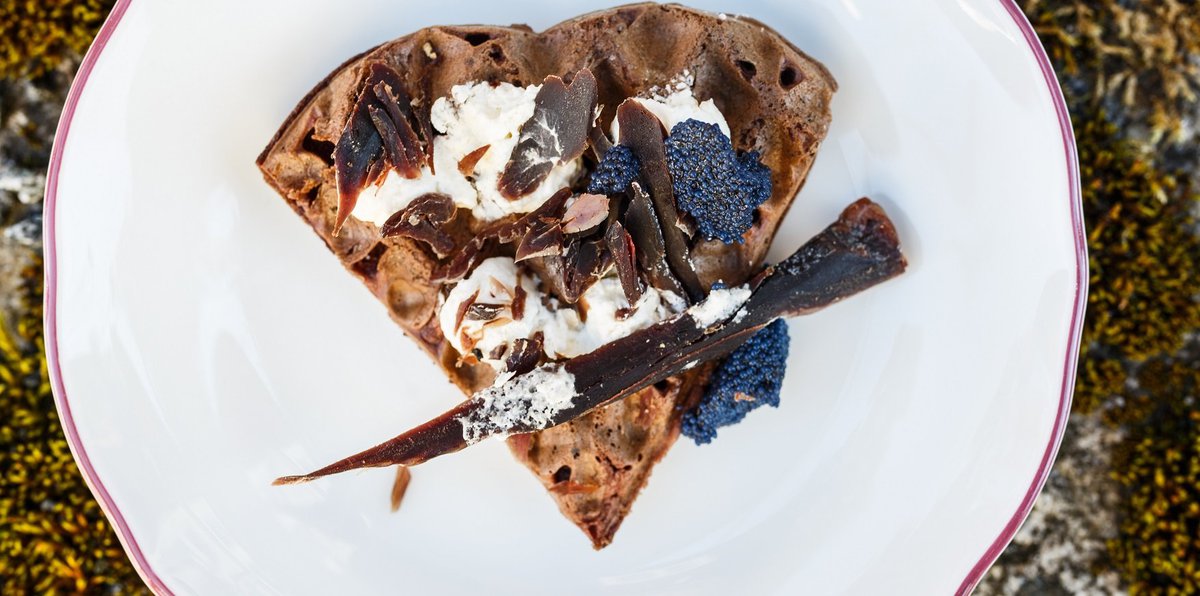
According to the Sami culture, the slaughtering of a reindeer has a spiritual character, and everything is put to use. While the meat is usually dried or smoked, the blood is added into some recipes as a protein, being used in a similar way to eggs.
Moving on with the origins theme, we come to The Sioux Chef project, which was presented by co-owners Dana Noelle Thompson and Chef Sean Sherman. Since 2014, The Sioux Chef has been on a mission to educate the world with regards to indigenous foods, bringing indigenous farmers to the forefront, and advocating for Native American food. Last year, Chef Sean with his partner Dana Thompson opened an indigenous foods restaurant in Minnesota called «Owamni by The Sioux Chef», where dishes are made only with ingredients that existed in North America before the Europeans arrived. There is no wheat flour, dairy, cane sugar, gluten, pork, beef or chicken on the menu.
Thompson has extensive experience with the food sovereignty movement. She traveled to the tribes to understand the impact of colonisation, searching for ways to heal their trauma, and came to the realisation that culturally relevant foods impact us mentally. She pointed out six pillars of food sovereignty; the focus on food and people, the values that food provides, the localisation of food systems, the importance of placing control locally, the building of knowledge and skills and working with nature.
Thompson also addressed the issue of ancestral trauma and she mentioned the benefits of eating fiber-rich foods, that are good for making the mind feel calm. She also talked about the new scientific research on epigenetic memory, a study of how the genome transfers and how it can be affected by different influences, which she correlates and studies further, with regards to food.
Chef Sherman on the other hand, has taken a deep dive into the terrors of colonisation within history, the struggle of native people and the ways in which The Sioux Chef group is lifting up indigenous foods. His main work is in recuperating the knowledge of native people, an ethos that is very much aligned with the current agenda within the world of gastronomy. With an insightful reflection on the attitudes of native people «We didn’t have the privilege to be wasteful, today we literally throw things away moments after buying them». For Sherman, it’s also a question about the state of modern agriculture and particularly the soil, biodiversity and recuperation of native ingredients and indigenous practices of food-growing.
Prateek Sadhu, chef of the Masque restaurant in Mumbai, launched a talk about Indian gastronomy and how it has developed to the present day «Chicken Tikka Masala is an entirely Western invention» - stated Chef Sadhu, standing in front of a map of India and proceeding to advocate for the importance of understanding Indian native ingredients, and the rich regional differences and flavours within the country. There’s so much to learn from the historic household traditions. For the last seven years Chef Sadhu has been distilling the essence of Indian food, extensively traveling the country in search of his own culinary identity, meanings, and India’s lost ingredients.
Andrea Petrini, as always, wonderfully eccentric, getting straight to the point, picked up on an element that is usually overlooked by chefs but that could contribute a lot to the restaurant world. The «Sonic Identity», as a special ad hoc element, a sensorial reflection of the chef’s identity, carefully orchestrated to enhance the meal experience.
Over these ten years, the gathering has established its own cherished traditions. Marianne and Per Einar, have close ties with the festival. Their restaurant Viksgarden has become the traditional and unwavering venue for the pre and post festivities: the welcome barbecue, the ‘between the talks’ meals, morning coffees and waffles with elderberry jam. The welcome barbecue on a cold September evening brings forth some intriguing delights. The controversial dish of minke whale, grilled, tender thin pieces of meat with a liver aftertaste, followed by dozens of boiled shrimps, served in a huge communal bowl for guests to build their own Rekesmørbrød, an open-faced shrimp sandwich. The ancient wooden building of Viksgarden is a place that breathes history, with antique linen tablecloths, furniture gathered long before upcycling became a trend, an age-old fireplace, gigantic wolf and dog fur coats that have been tried on only by the guests of honour, and walls all covered with worn-out, dark metal signs and buckles, the original ones dating back to the early 1800s, completely filling up every space on the walls and surfaces. «For now we are trying to stop collecting. Per, is the one who is passionate here» - laughs Marianne, who has been running the kitchen of Viksgarden with her mother for around 20 years, cooking regional foods, from all over Helgeland. On the morning after the event, the remaining guests head for a serving of waffles at Viksgarden before their final departure.

